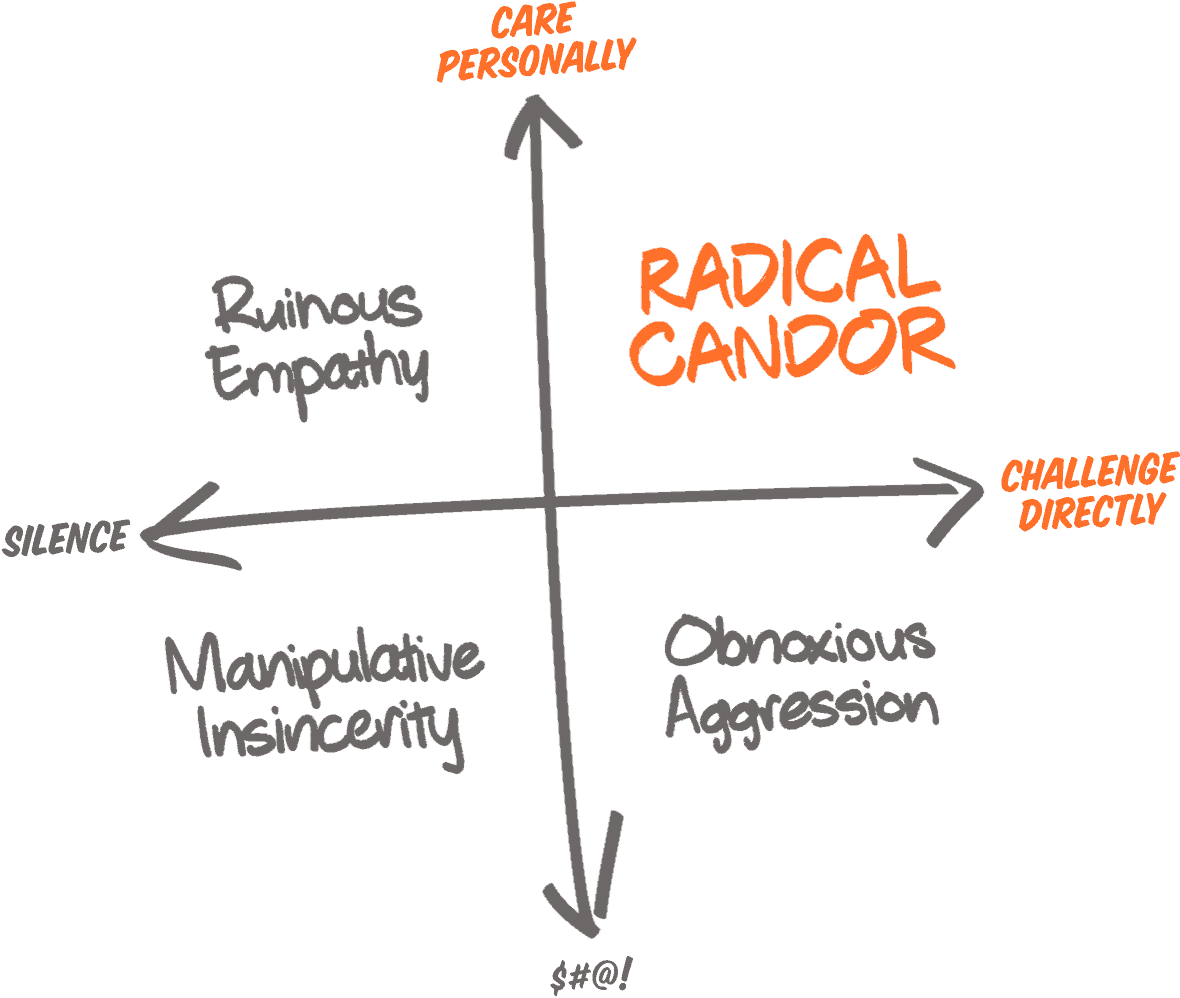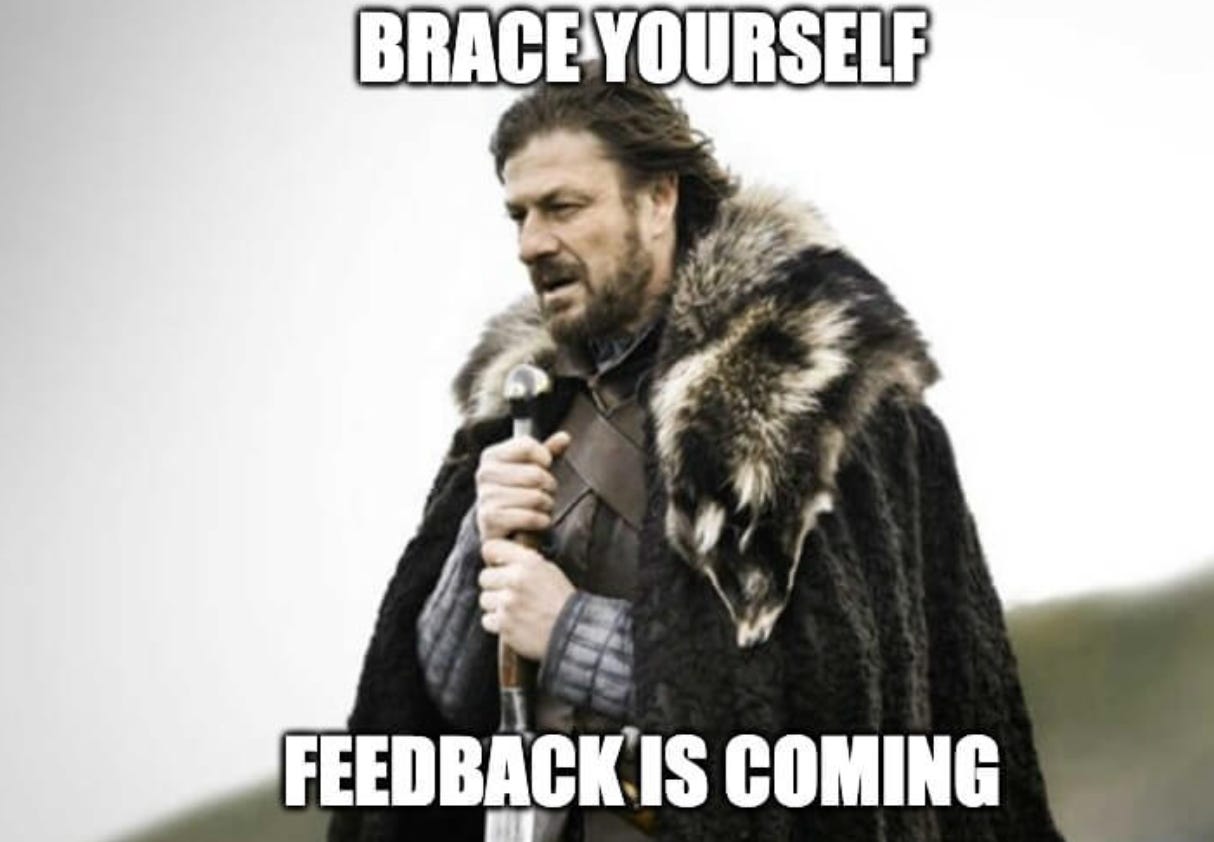Never struggle to give feedback again (even to your manager)
Imagine your best friend keeps interrupting you when you speak.
Would you have a hard time telling them, “Hey, can you stop interrupting me?”
Probably not.
So why do you have a hard time sharing feedback with your coworkers?
There is a lot more at play:
They might have power over you
You might not be close to the person
You have no idea what will happen—will they write bad feedback for you? Will it be difficult to work with them afterward?
I have worried about all of these. They’re all valid.
But I can also say that feedback has been one of the best ways to build relationships.
In this article, I’ll walk you through a step-by-step process on how to never struggle to give feedback again—or at least know what to do next.
You’ll be able to use the lessons in this article to build close relationships at work, instead of worrying about it tearing them down.
⭐️ Main takeaways
How to set yourself up to make giving feedback easy
A step-by-step feedback process for even the most difficult situations
💡 Make it easy WAY before giving feedback
Soon, I’ll walk you through a 7-step process you can use for any serious feedback you need to share.
But the best thing would be if you barely needed any of those steps—if you could give feedback as comfortably as you would give to your close friends.
To do that, I recommend 3 things:
Build a relationship with the other person way before feedback conversations
Think about your close friend again. Your first interaction with them shouldn’t be you giving serious feedback. Instead, have 1:1s or at least an intro chat with the other person and get to know them. This starts the path toward making feedback like giving it to a close friend.
Share that you are open to receiving feedback
As I meet new people, toward the end of the conversation, I say,
“By the way, if there’s ever any suggestions or feedback you have for me, I want you to feel free to share it with me at any time. It can be a raw thought or just a quick suggestion. I care about growth and want you to know you won’t hurt my feelings.”
When I do this, it does 2 things. First, it shows the other person I am growth-minded, so if I were to give them feedback, it would be coming from a growth perspective, not with bad intent. Second, they often reciprocate and share the same thing of wanting feedback too. This opens the door to me sharing candid feedback later on because they gave permission.
Give positive feedback first
When someone does something great, like a presentation, shipping a new project, or solving a difficult bug, I send them praise directly. This further builds a relationship and again, shows that I am on their side. Because I’ve shared positive feedback, they are more open to hearing me out when I have constructive feedback. They know I care about them and I’m just trying to help.
Doing these 3 things will make feedback conversations 10x easier. You can skip the rest of the article now 😄 !
These all make feedback conversations more like giving feedback to a friend rather than a coworker you are not sure how to approach.
But sometimes there’s more to it. The feedback might be more serious, your relationship isn’t strong, or you’re worried about a power dynamic.
If that’s the case, read on. I learned the following 7-step process from Jess Goldberg’s Management Mastery cohort, which she has allowed me to share with you all.
(Jess is an executive coach, ex-VP at multiple companies, and lecturer at Columbia University.)
1) Look inward first: Know your intent
If you only read 1 step, read this one. It’s by far the most important.
Before giving feedback, your intent has to be in the right place.
Are you considering sharing the feedback because it will make you feel better? Because it’s built up for a while and you need to let it out?
I’ve been there. I’ve worked with people that did things that bothered me that I let build up for months and months, until I figured I would finally let it out.
Don’t be me in that situation. It never comes out the right way.
If you are in that situation, I recommend letting it out to someone else first. Otherwise, the built-up emotions will show through when giving the feedback.
The ideal mindset before giving feedback is one about helping the other person grow.
2) Get permission
This is always the most awkward part.
That awkward question of, “Hey, could I share some feedback with you?” as the other person braces for impact.
I get it. But after trying it, I can attest to this being super valuable, especially if you aren’t sure how the person will take it.
The best tip I’ve found for this is to include more information in your question.
For example:
❌ Bad: “Hey, can we chat? I have feedback.”
✅ Good: “Hey, I saw your announcement post in Slack a bit ago and I was curious if you’d be open to some constructive feedback?”
^ I used that exact line before in a feedback conversation that went well.
An example Jess gave from her course was:
✅ Good: “Do you have a few minutes to discuss feedback on the presentation you gave this morning?”
As awkward as this is, it helps in 2 ways:
It ensures the other person is in the right mindset for the feedback. Sometimes the other person isn’t in a great mood and won’t take feedback well.
They opt in. As long as you aren’t rude, there shouldn’t be any backlash.
3) Show you care
This step is the foundation of Kim Scott’s famous book, Radical Candor, and it ties back to your intent in step 1 of this framework.
Your intent is that you care about the other person and want to help them grow.

Before giving feedback, put yourself in that “caring mindset.” What would someone who cares about the other person do? How would they say things?
One thing you can do is tell them that!
In the past, I’ve said this when giving feedback to my manager at the time:
✅ Good: “I want you to know I’m sharing this feedback because I care about us having the best working relationship possible.”
This helps defuse the situation before it even starts. Again, it’s all about ensuring the other person knows you are on their side.
If you have a good relationship built up, you don’t need to do this step if it feels weird, but it doesn’t hurt.
4) State your observations
Share what you notice and be as specific as possible. It should be as close as possible to raw data, but it can lean toward your personal observations too.
For example, in the past I’ve said:
✅ Good: “Recently, I’ve felt like there may be some tension in our async communication, specifically when we were having a discussion around <x>.”
The key is to avoid using cloudy words. Cloudy words are vague and result in defensiveness.
In the above example, using cloudy words could look like:
❌ Bad: “Recently, I noticed you being offputting in our async communication.”
Why is that bad? The person now feels like you are putting blame on them and it’s not clear what they are doing wrong. Before, it was us working on a clear, common, problem: tension between us. Now, it’s working on a vague problem of the person being offputting.
An example Jess used from the course is:
❌ Bad: “In observing the past few weeks, I noticed your work was sloppy.”
Better would be:




